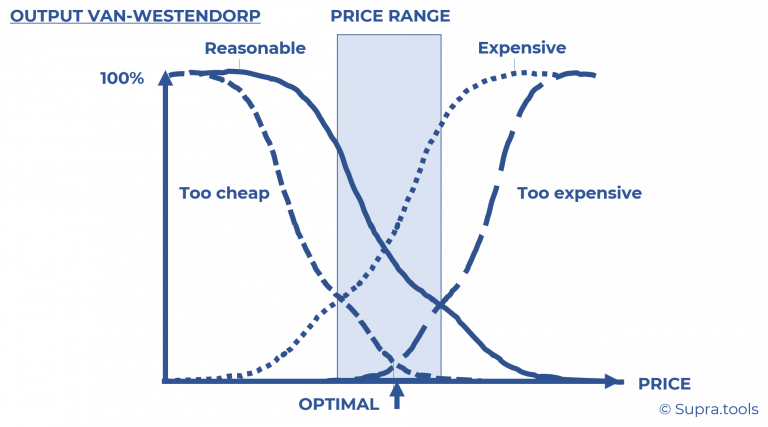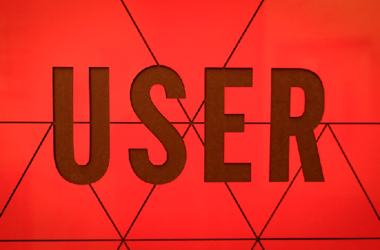In the bustling world of design services, where creativity meets commerce, understanding the delicate balance of supply and demand is essential for both designers and clients alike. This equilibrium not only shapes market dynamics but also influences how designers price their services. Let’s delve into this intriguing interplay and explore how the Van Westerdrop pricing model can empower designers to set fair and strategic pricing.
The Supply-Demand Equilibrium in Design Services
Designers often grapple with pricing their services due to the subjective nature of design and the challenge of quantifying its value. Whether selling logo designs, websites, or comprehensive design systems, they must navigate client budgets, market competition, and their own expertise to arrive at a fair price. This struggle is compounded by the intangible aspects of design—such as creativity and innovation—which can be difficult to translate into concrete pricing metrics.
Supply-Demand Equilibrium Example:
Imagine a bustling pizzeria in a vibrant neighborhood. The supply-demand equilibrium here is evident: if the pizzeria consistently sells out of their delicious pizzas every evening (high demand) but can only produce a limited number due to kitchen capacity (limited supply), they must find a pricing strategy that balances profitability with customer satisfaction. Similarly, a bakery offering freshly baked goods faces a similar equilibrium, adjusting prices based on customer footfall and the availability of ingredients. This example illustrates how market forces shape pricing decisions beyond the realm of design.
The design services market operates on a fundamental principle of supply and demand. Here’s a breakdown of how this equilibrium plays out:
Supply Side: Design services are offered by skilled professionals, agencies, and freelancers equipped with creative expertise. The supply is influenced by factors like the availability of designers, their skills, experience levels, and their willingness to cater to different market segments.
Demand Side: Businesses and individuals seek design services to enhance their branding, marketing, products, and user experiences. Demand is fueled by economic growth, technological advancements, changing consumer preferences, and the increasing importance of design in business success.
Equilibrium: The market reaches equilibrium when the quantity of design services supplied matches the quantity demanded by clients. This balance is influenced by various factors including pricing strategies, perceived value, competition, and market trends.
Introducing the Van Westerdrop Pricing Model
The Van Westerdrop pricing model is a strategic framework that enables designers to determine pricing based on the value they deliver to clients. Here’s why this model is gaining traction among design professionals:

Value-Based Pricing: Instead of relying solely on cost or competition, the Van Westerdrop model emphasizes value-based pricing. Designers assess the impact of their services on client outcomes, such as increased sales, enhanced brand recognition, or improved user engagement.
Factors Considered: Designers using this model take into account project complexity, required expertise, the unique value proposition of their services, and specific client objectives. This comprehensive approach ensures that pricing is tailored to the specific needs and goals of each client.
Client Engagement: The model encourages designers to engage closely with clients, understanding their business objectives deeply. By aligning pricing with the perceived value of achieving these objectives through design, designers can build strong, mutually beneficial relationships with clients.
Adaptability: One of the key strengths of the Van Westerdrop model is its adaptability. It can be applied across various design disciplines and client scenarios, empowering designers to tailor their pricing strategies based on project specifics and market conditions.
Based on the video, here are questions that can assist you in pricing your design services more effectively:
- At what price point would you start questioning the quality due to its low cost?
- At what price would you perceive it as a great bargain?
- At what price would it begin to seem expensive to you?
- At what price would it become so costly that it’s prohibitive for your budget?
Use these answers to refine and determine an optimal pricing strategy for your design services.
Embracing a Strategic Approach
For designers navigating the design services market, embracing a strategic approach to pricing is crucial. By understanding the supply-demand dynamics and adopting innovative pricing models like Van Westerdrop, designers can:
- Articulate Value: Clearly communicate the value of their services to clients, demonstrating how design contributes to achieving business goals.
- Negotiate Fairly: Establish pricing that reflects the true value of their expertise and the impact of design on client success.
- Cultivate Relationships: Foster long-term relationships with clients based on trust, transparency, and shared objectives.
In the realm of design services, the dynamics of supply and demand play a pivotal role in determining a designer’s success. While quality remains fundamental, several factors related to pricing optimization and availability are equally crucial in satisfying market demands and securing work.
- Pricing Optimization: Designers must strategically align their pricing with market expectations and value perceptions. Setting optimal prices that reflect the quality of their work while remaining competitive can attract a broader range of clients. Pricing that is too low may raise doubts about quality, while excessively high prices can deter potential customers. By finding the right balance, designers can leverage pricing as a strategic tool to stimulate demand and maximize sales.
- Availability and Timeliness: In a competitive market, availability and responsiveness can make or break client relationships. Designers who are accessible, responsive, and able to meet deadlines consistently are more likely to satisfy client demands and retain business. Timeliness not only reflects professionalism but also demonstrates a commitment to customer satisfaction, which can lead to repeat business and positive referrals.
- Market Adaptability: Understanding market demands and adapting services accordingly is essential for sustaining demand. Designers who can offer flexible pricing structures, such as packages or tiered options, can cater to diverse client budgets and preferences. This adaptability enhances market reach and allows designers to capitalize on a broader spectrum of opportunities.
- Value Proposition and Differentiation: Effective pricing strategies should align with a compelling value proposition. Designers who can articulate the unique benefits of their services—whether through innovative design solutions, personalized client experiences, or added value offerings—can differentiate themselves in a crowded market. A strong value proposition enhances perceived worth and justifies pricing decisions, influencing client decisions in favor of the designer.
- Relationship Building and Networking: Building strong client relationships and cultivating a robust professional network are instrumental in sustaining demand. Positive interactions, referrals, and word-of-mouth recommendations stem from exceptional service delivery, reliability, and trustworthiness. Designers who prioritize relationship building can leverage their network to generate consistent demand and foster long-term partnerships.
It’s unwise to pay too much, but it’s worse to pay too little. When you pay too much, you lose a little money—that’s all. When you pay too little, you sometimes lose everything, because the thing you bought was incapable of doing the thing it was bought to do.
John Ruskin
While quality remains foundational in the design industry, pricing optimization and availability are key determinants of a designer’s ability to meet market demands and secure work. By strategically aligning pricing with value, maintaining accessibility and reliability, adapting to market dynamics, and fostering strong client relationships, designers can enhance their competitiveness, drive demand, and achieve sustainable success in the dynamic landscape of design services.
In conclusion, the design services industry thrives on the equilibrium between supply and demand, shaped by innovative pricing strategies like the Van Westerdrop model. By embracing value-based pricing and understanding the broader market dynamics, designers can elevate their offerings and drive sustainable growth in this vibrant creative landscape.



